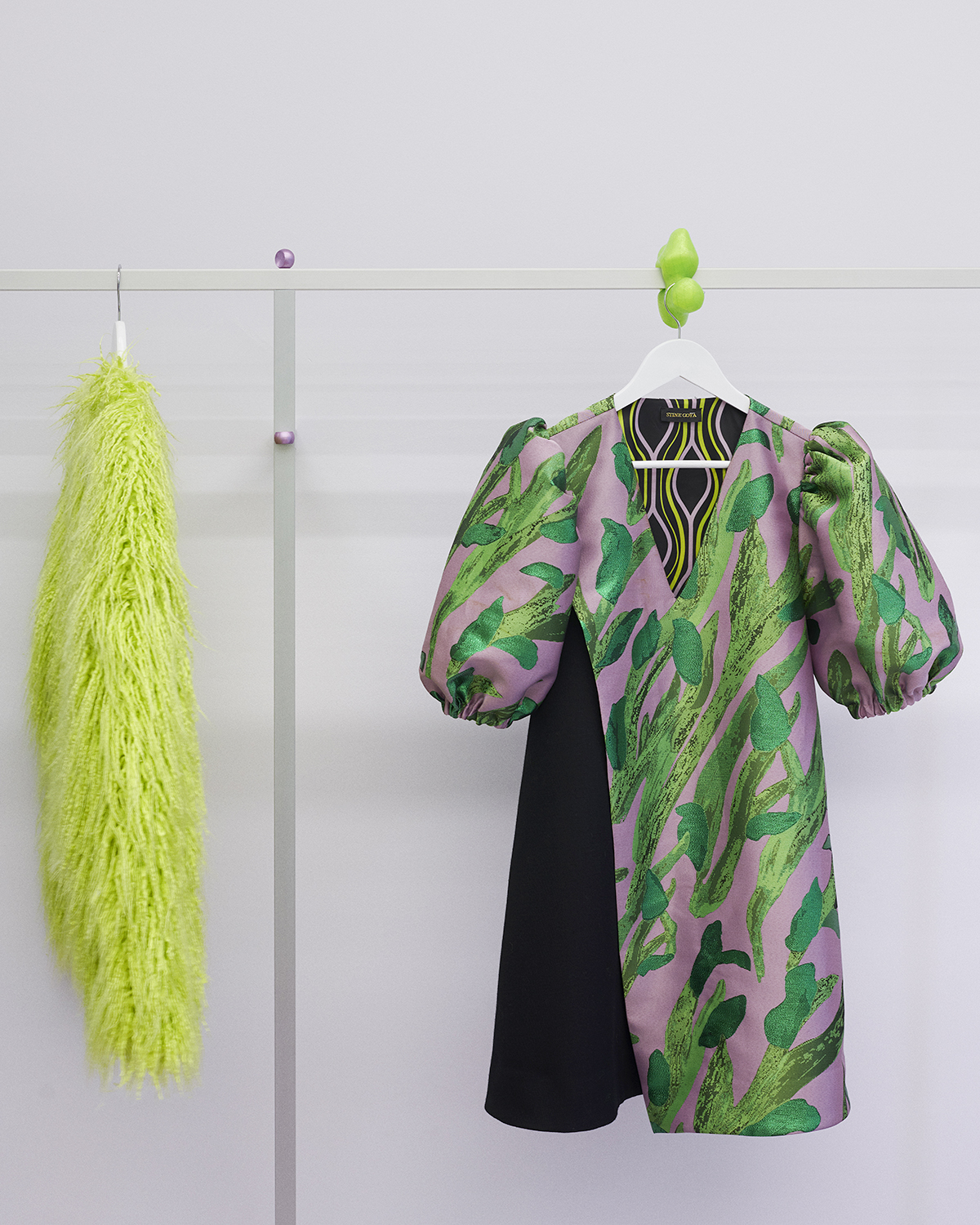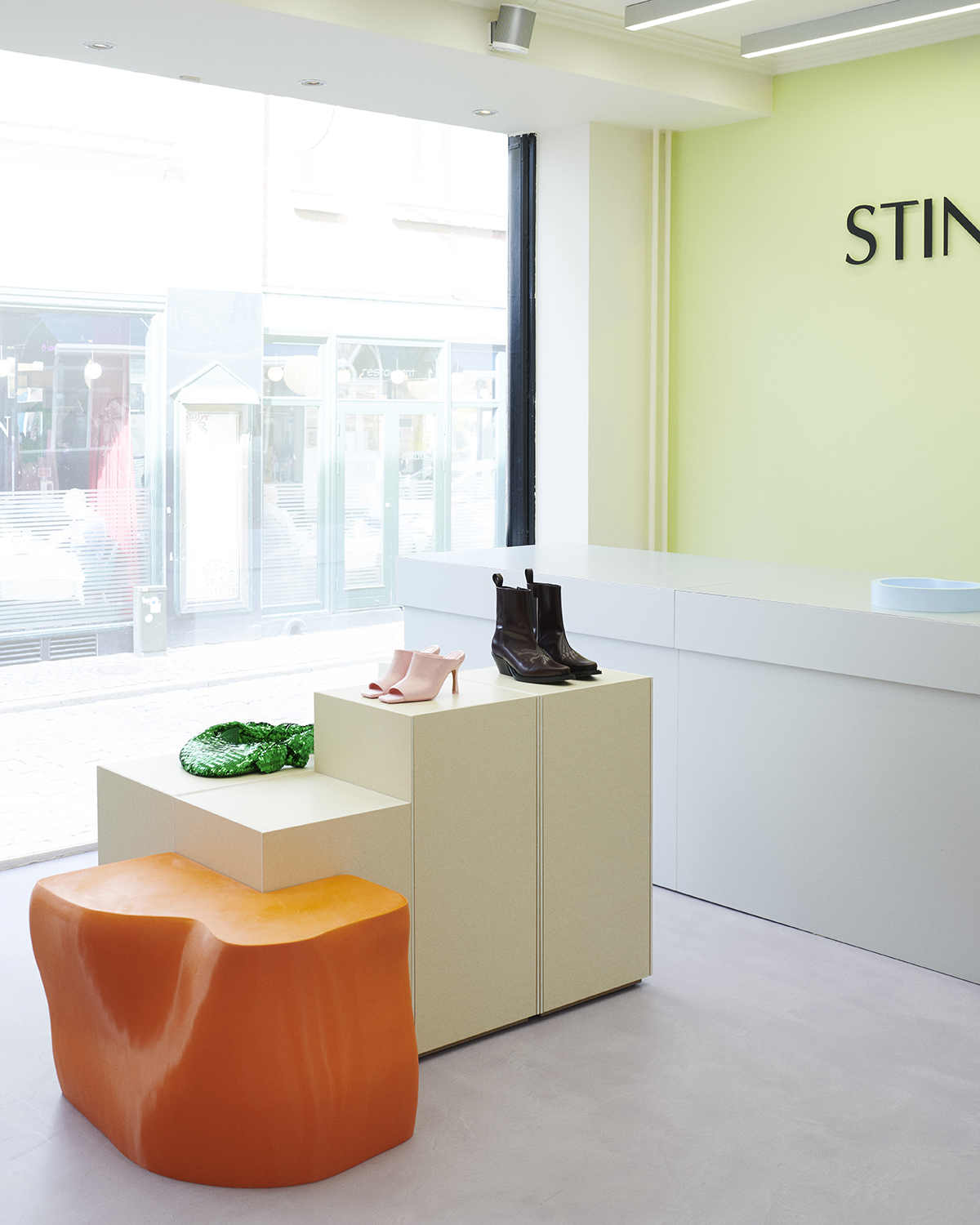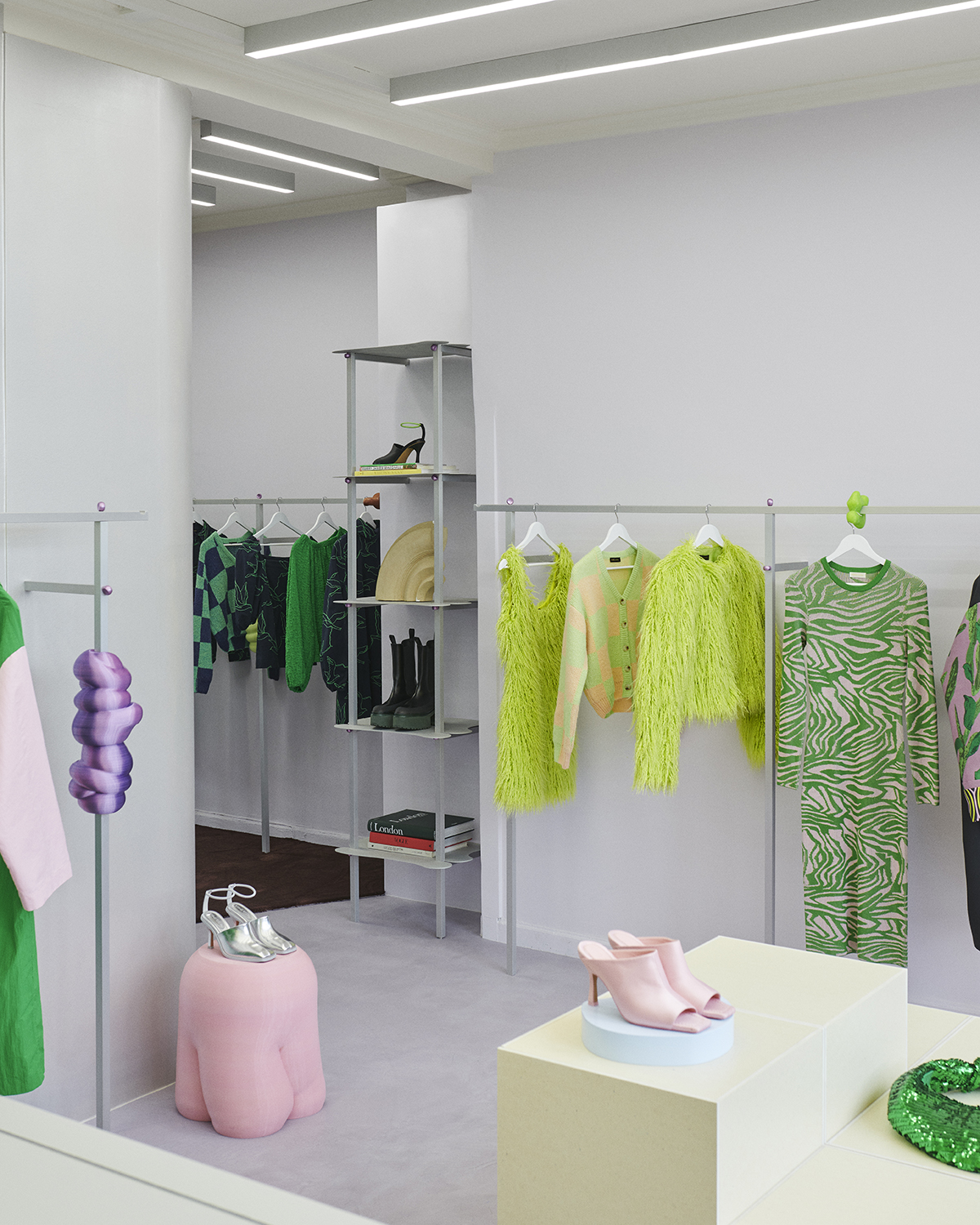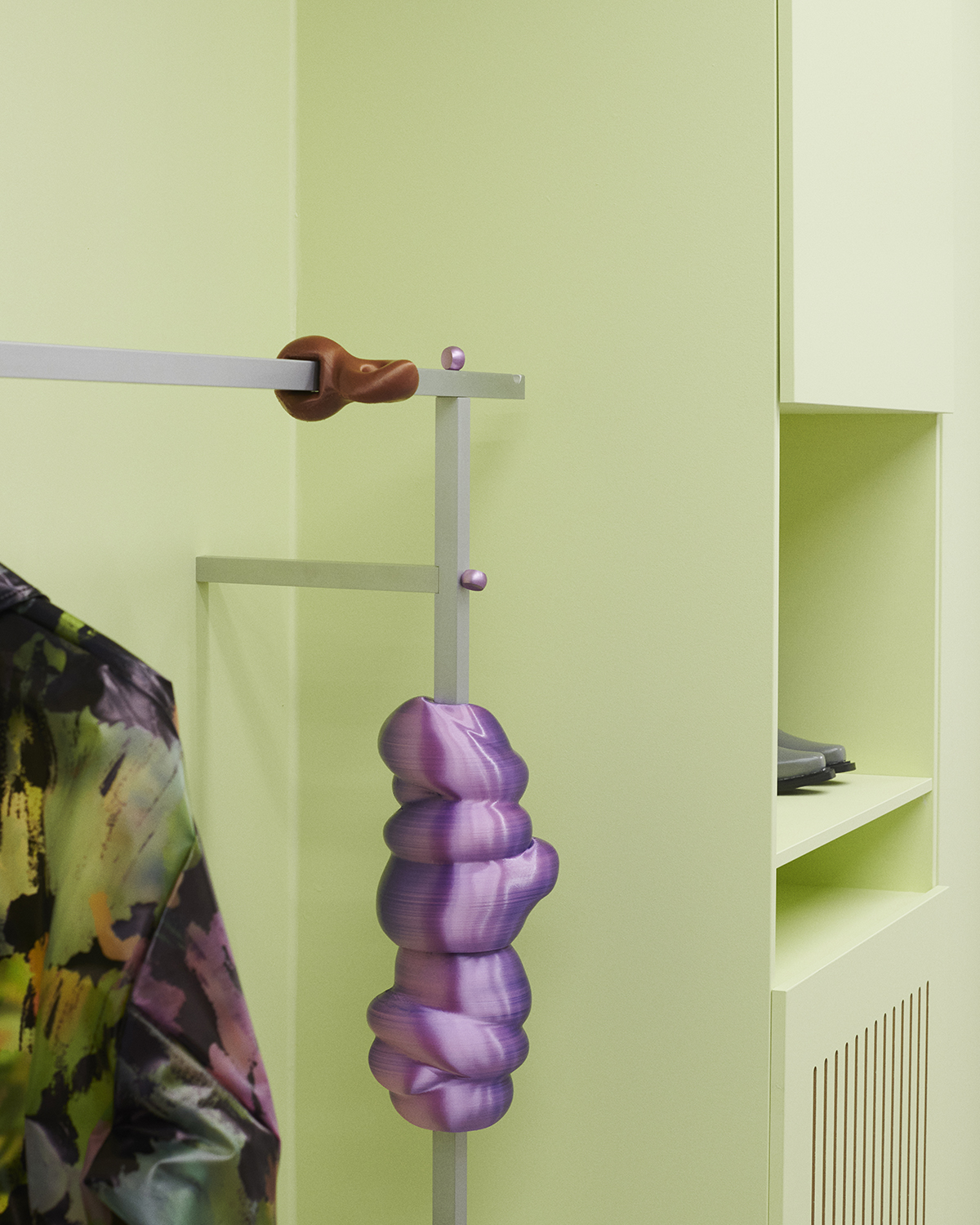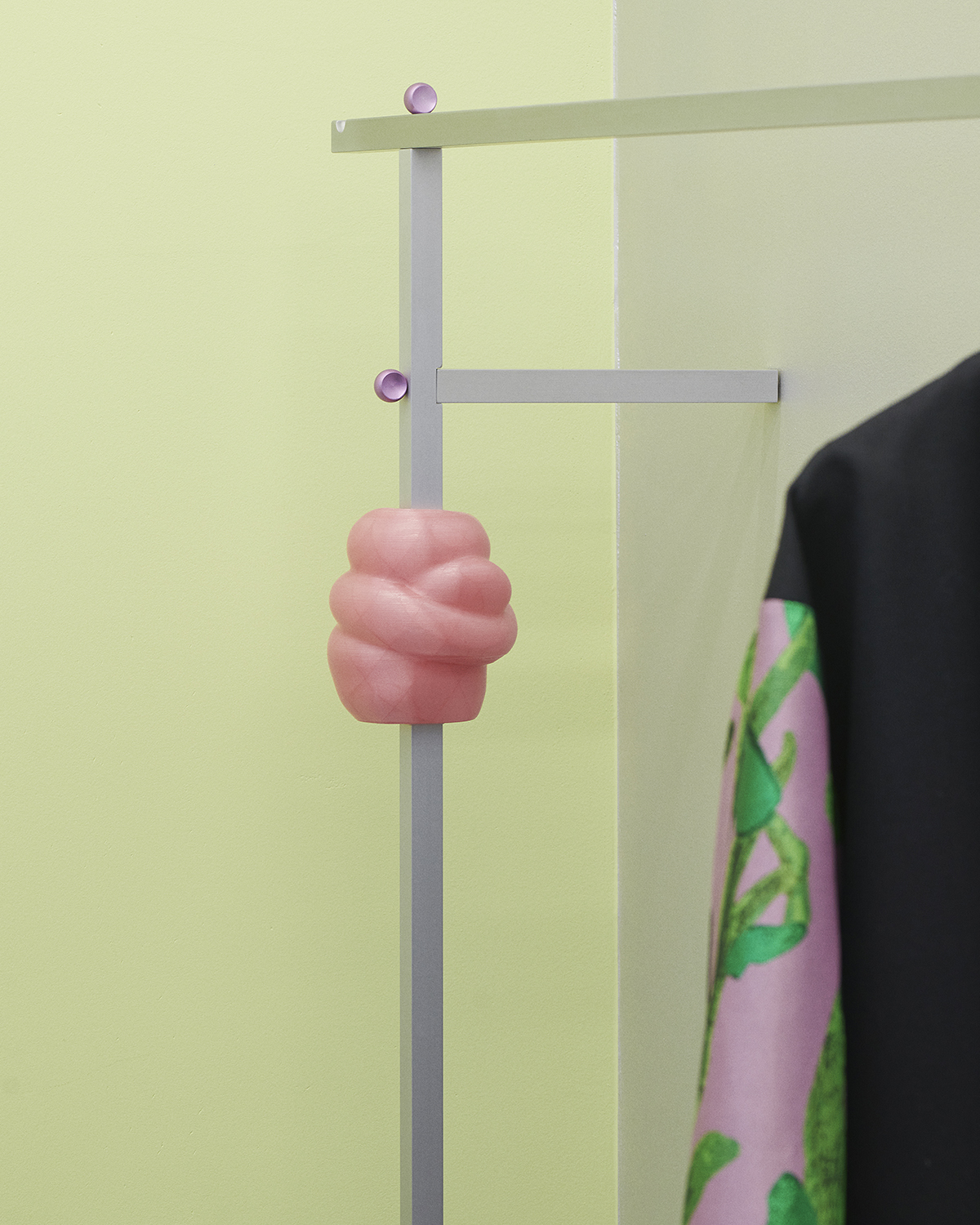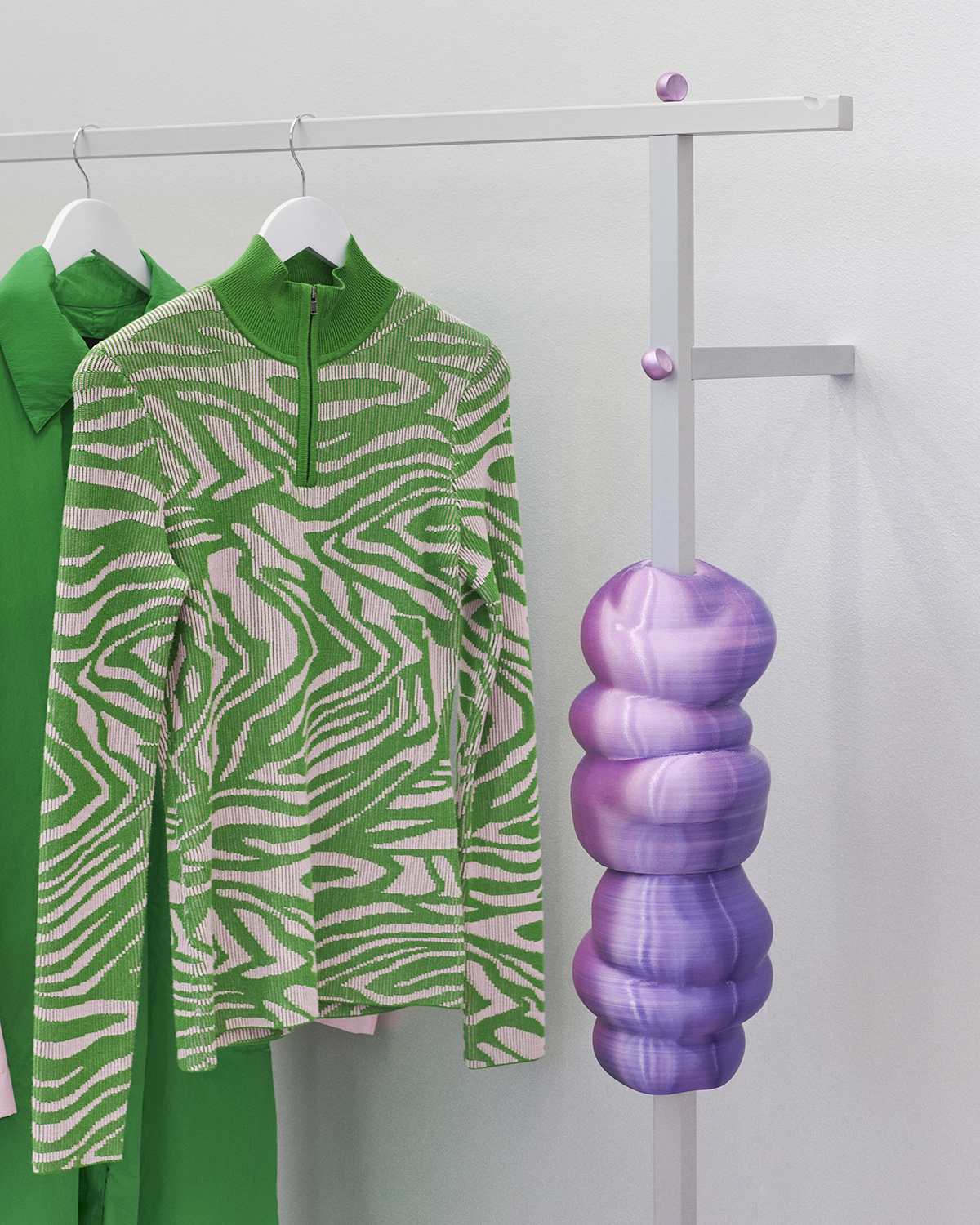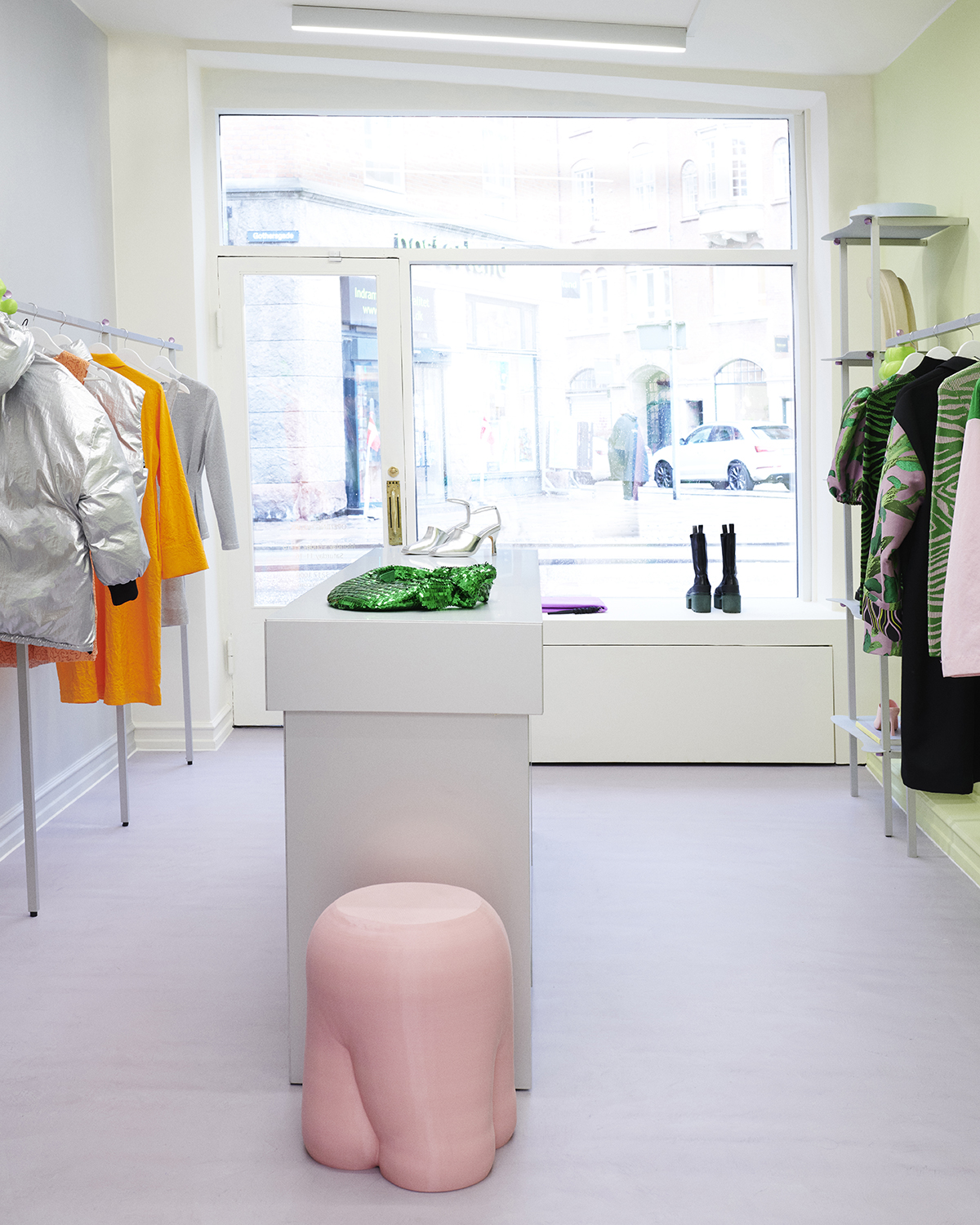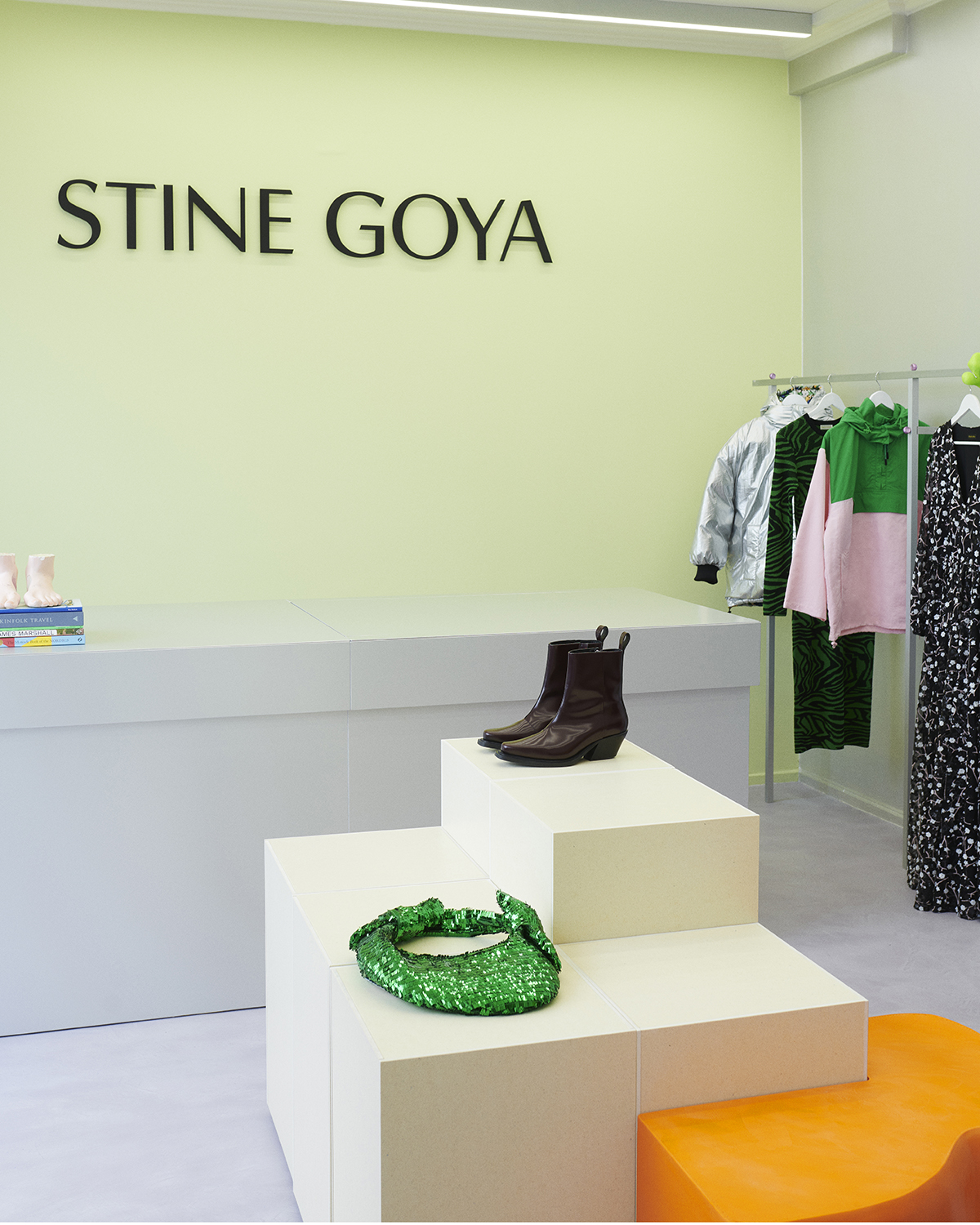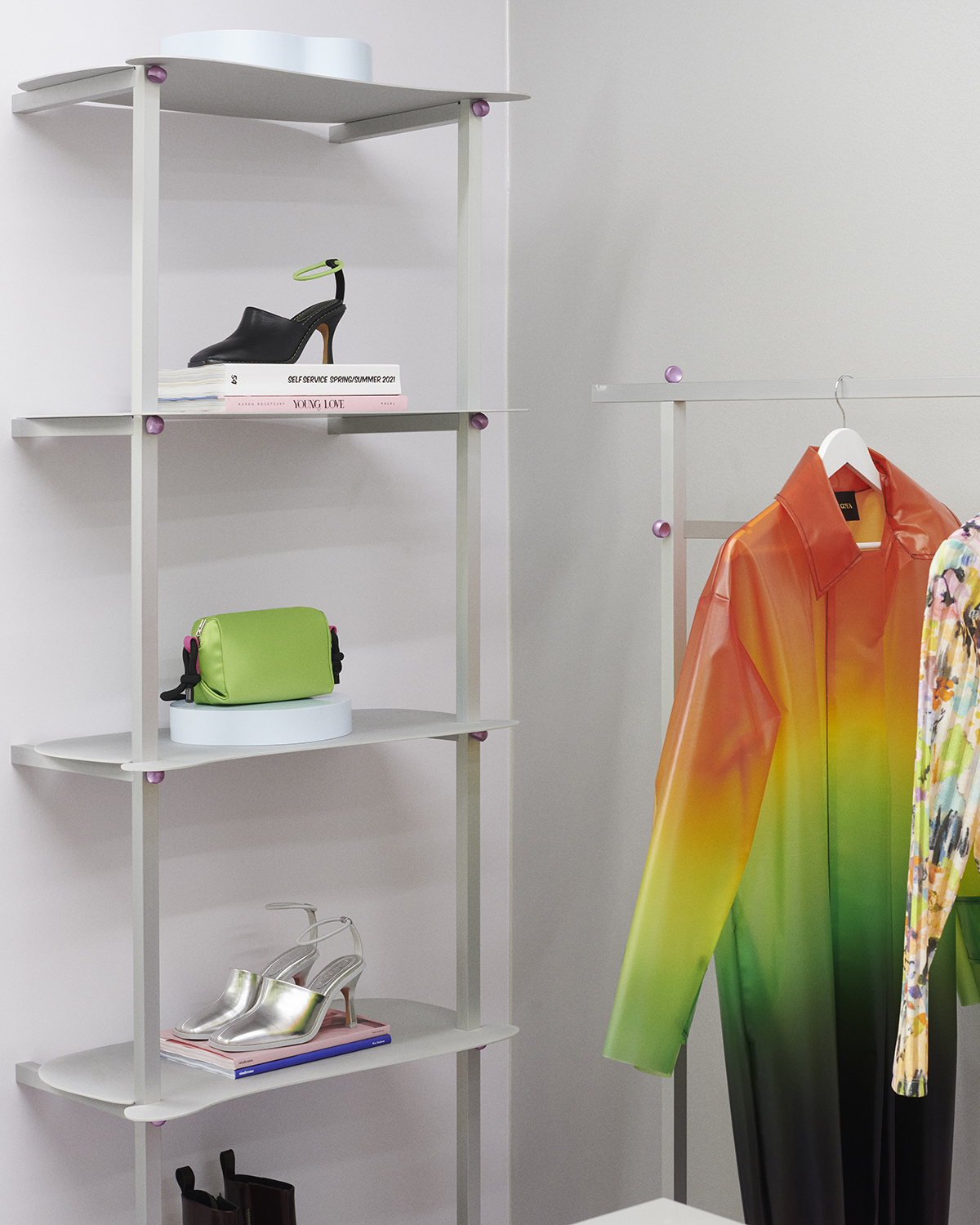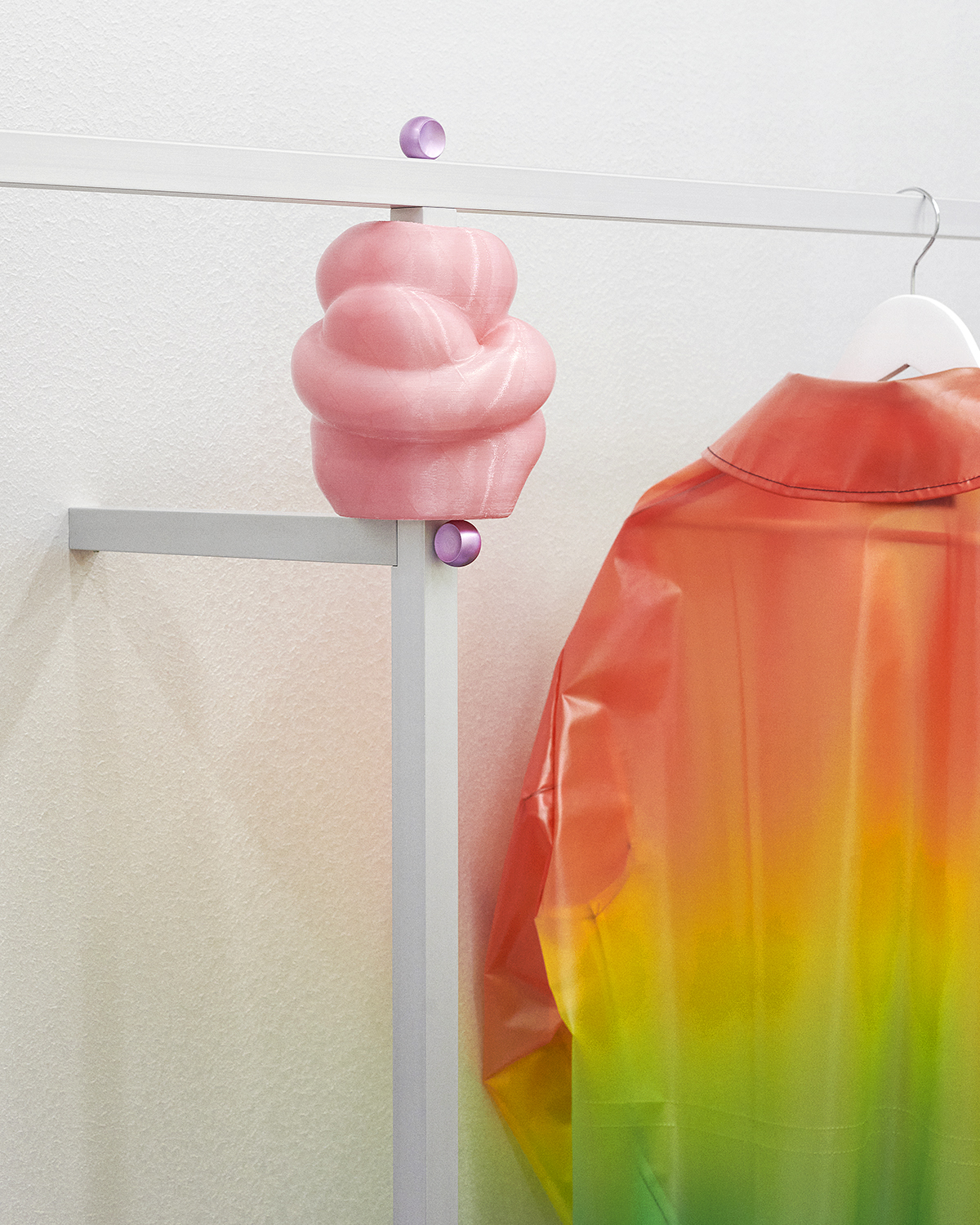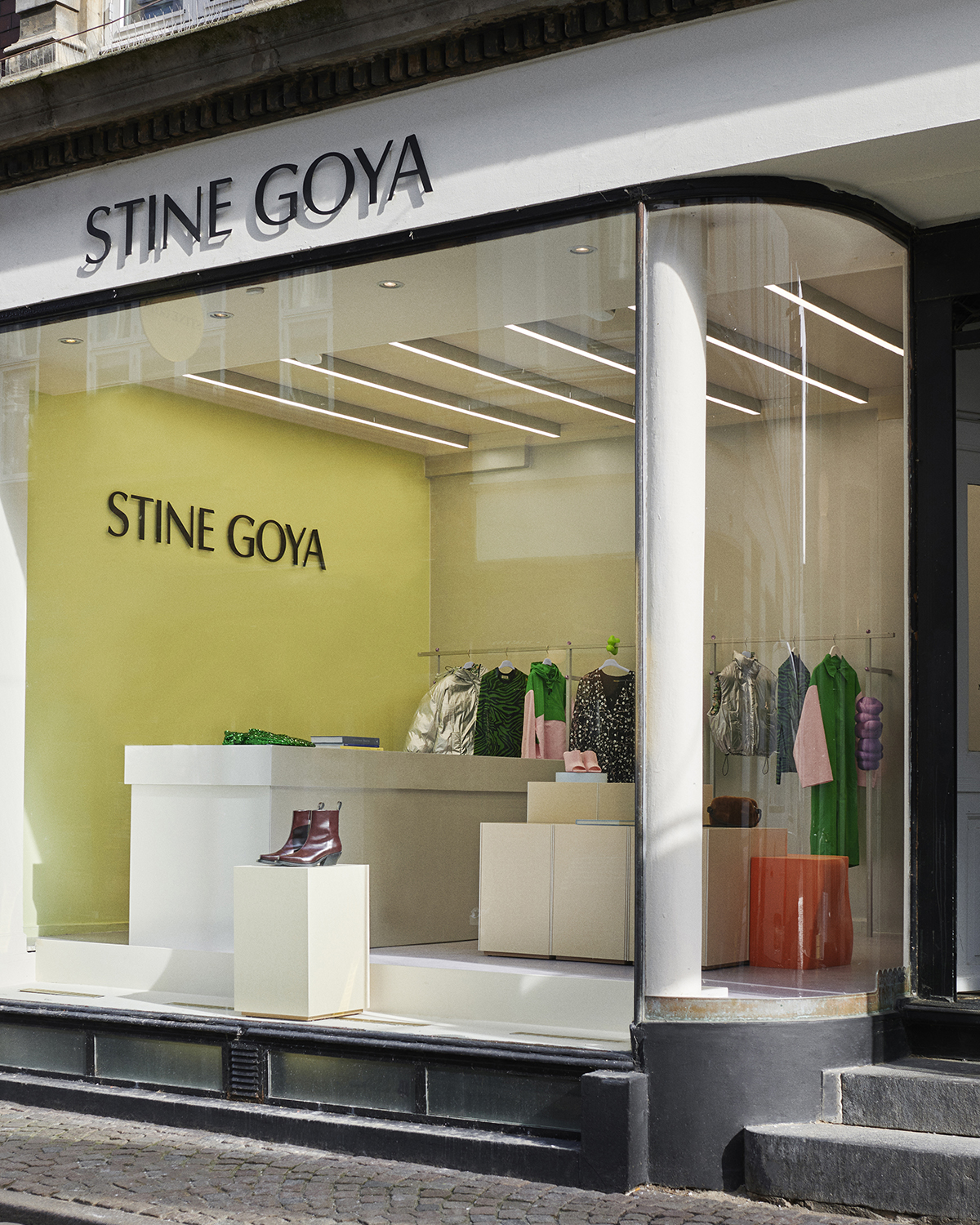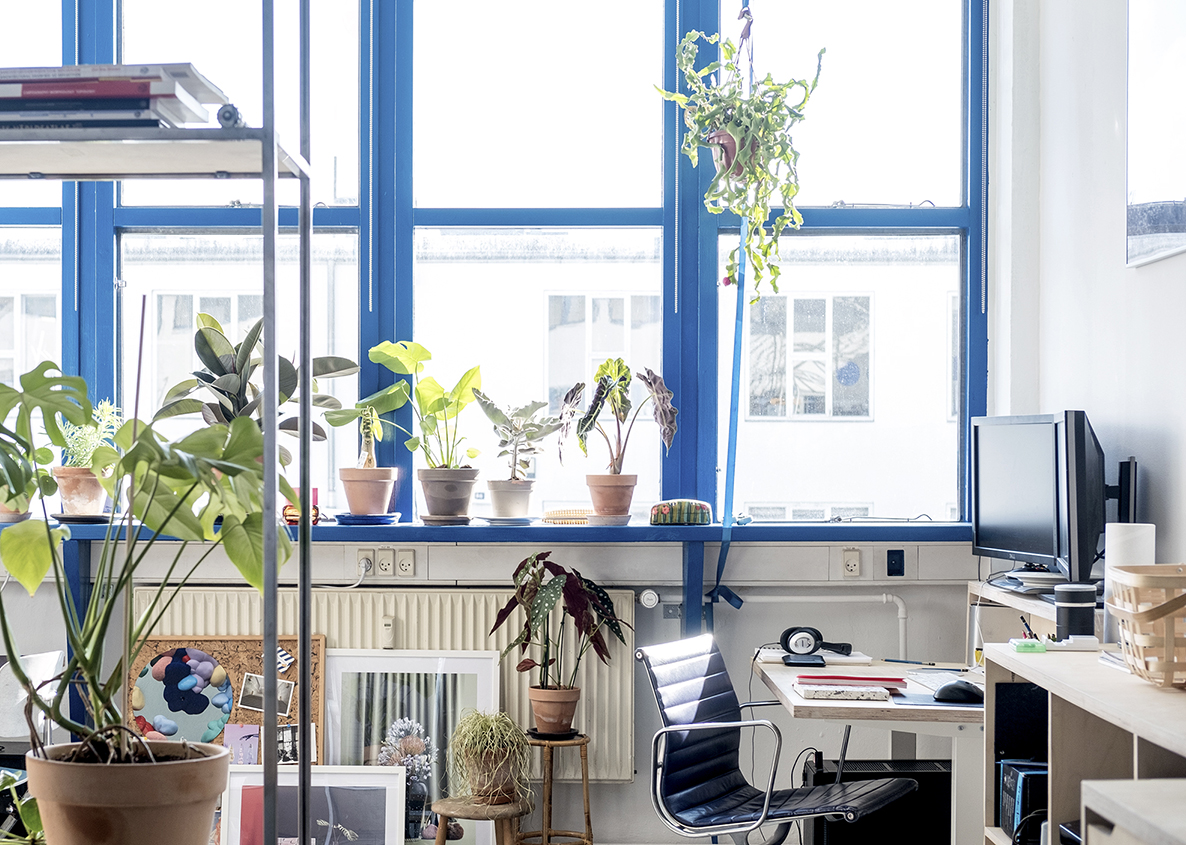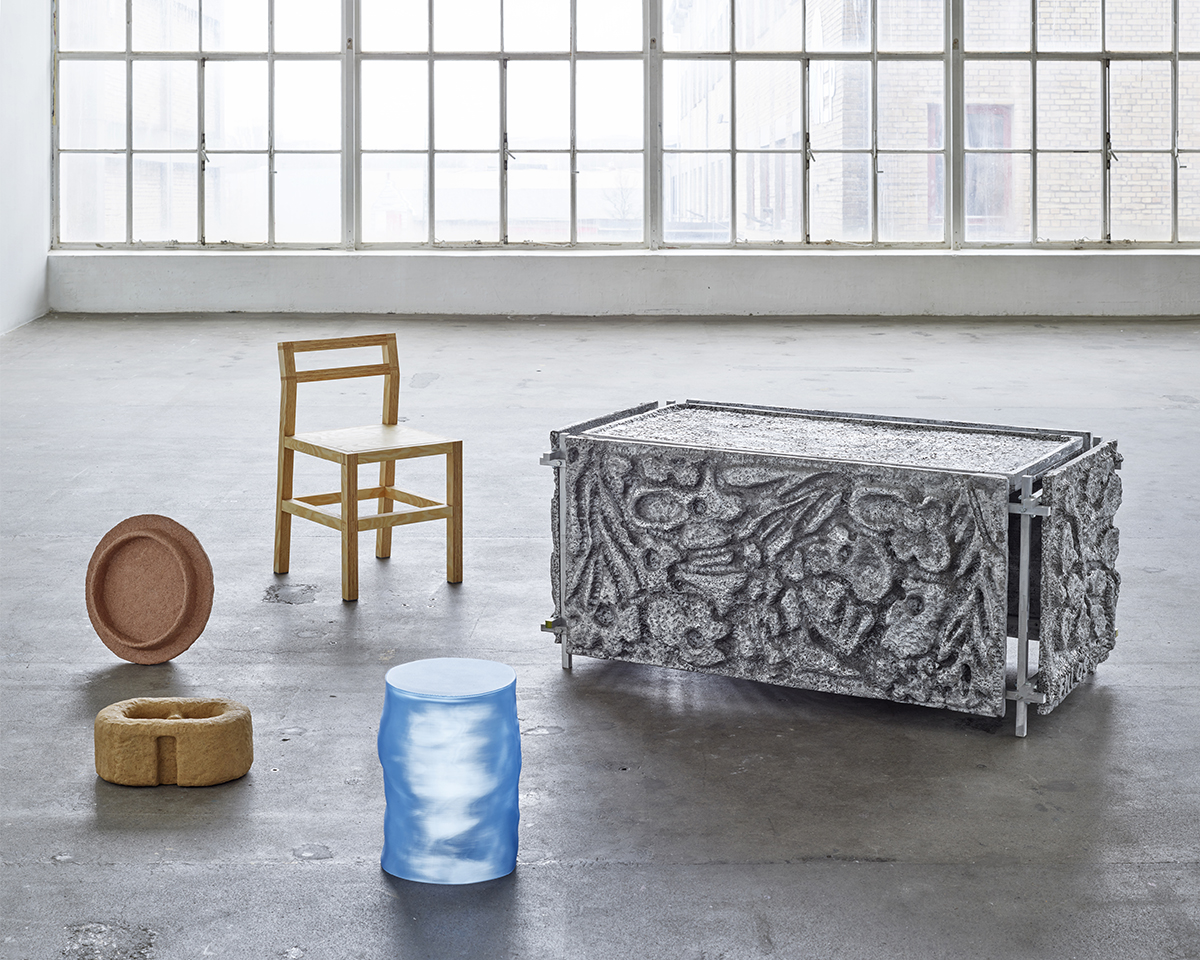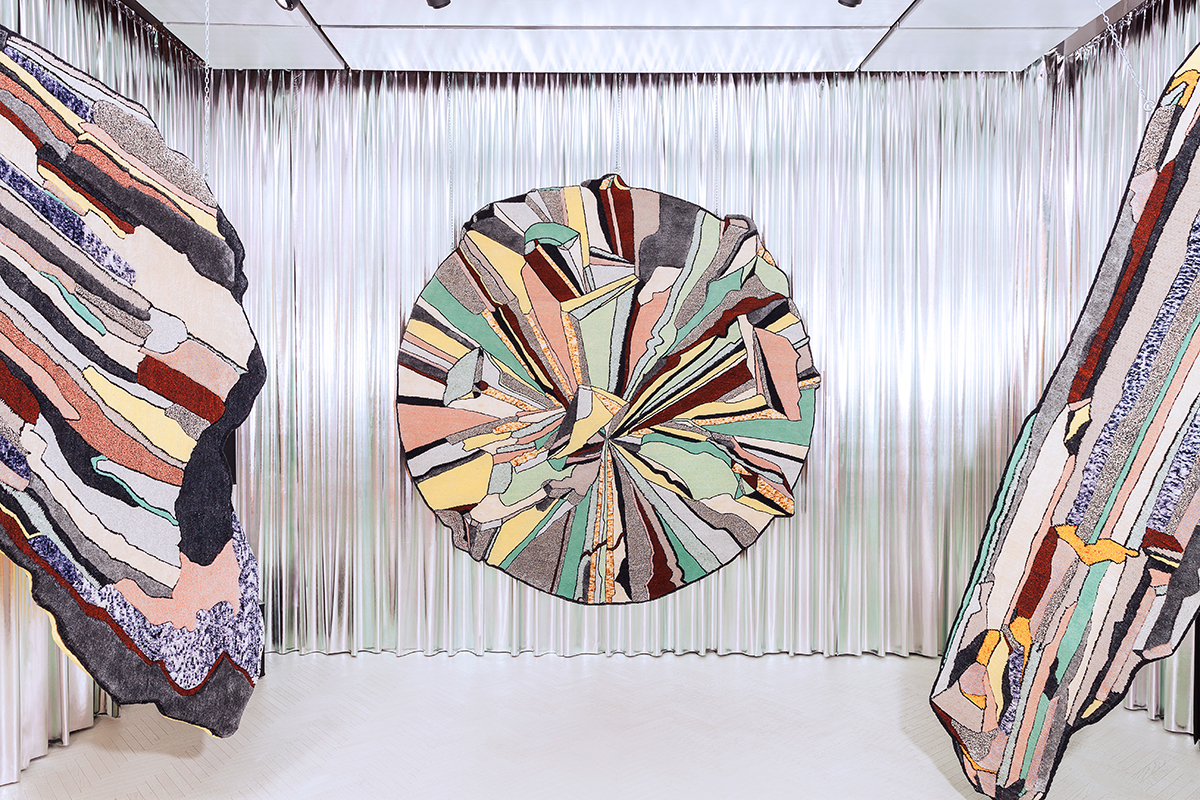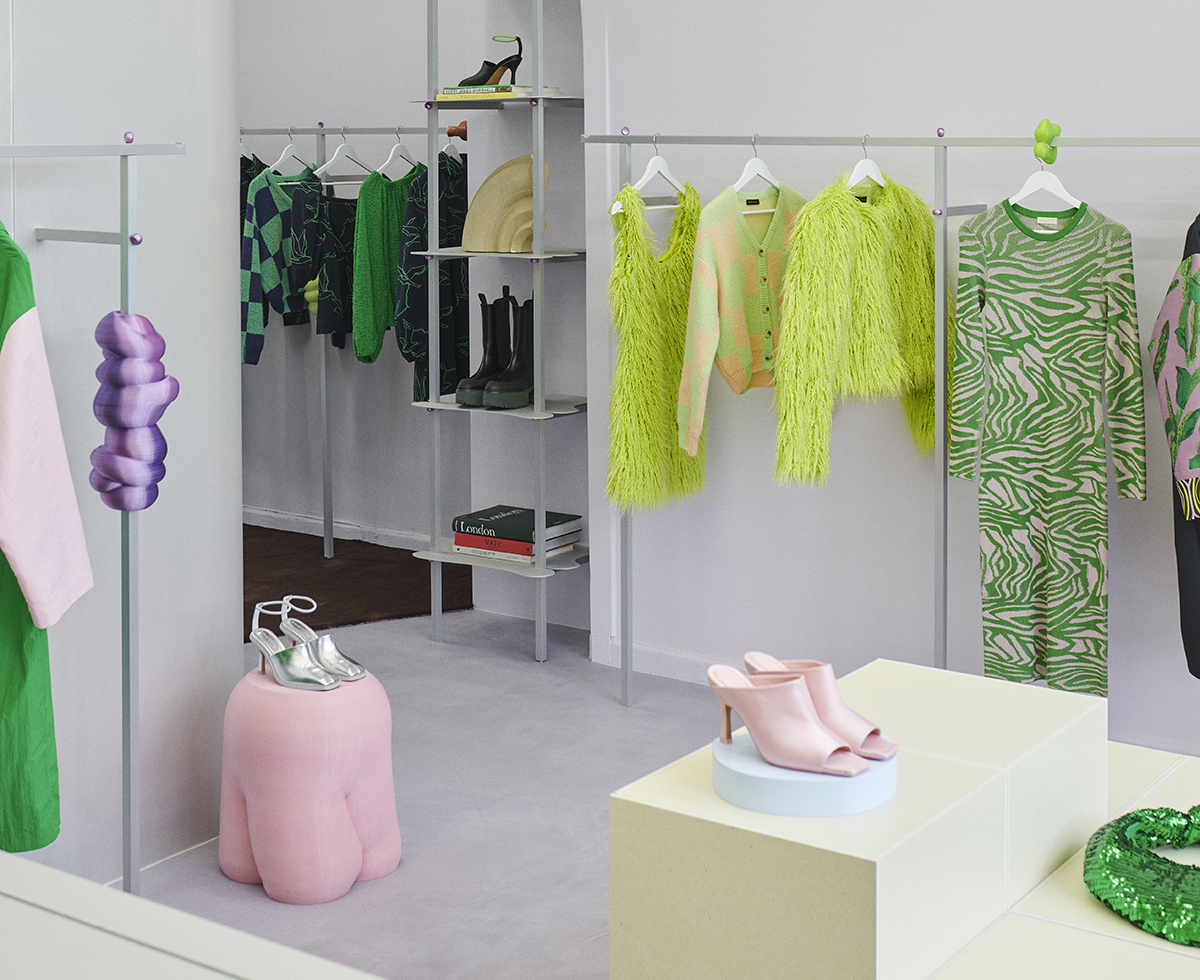
05.26.22
Interiors
In Wang & Söderstrom’s First Shop Interior, Color Reigns and 3D-Printed Blobs Act as “Jewelry” For the Space
If you think about it, fashion and interiors share a similar central dilemma: how to create clothing or spaces that are new and interesting enough to get attention, but not so much so that they feel stale or dated too quickly. In both realms, the solution often lies in accessories. Not sure you want to commit to a $10,000 bright-blue sofa? Get a bright-blue pillow or lamp. Can’t afford to retire that wildly printed Gucci suit after one season? Go for the crazy tie or sunglasses. And if you’re designing a store interior that needs to last for years to come — and complement a clothing line that already has a strong visual personality — keep it understated, putting all the personality into the “jewelry.” That’s what the Copenhagen creative duo Wang & Söderström are calling the 3D-printed blobs that cling to the racks in their new shop interiors for Danish fashion brand Stine Goya; set against a simple color-blocked backdrop, the sculptural accents are all removable and replaceable, which will eventually allow the duo to “refresh the store with few material resources,” they say.
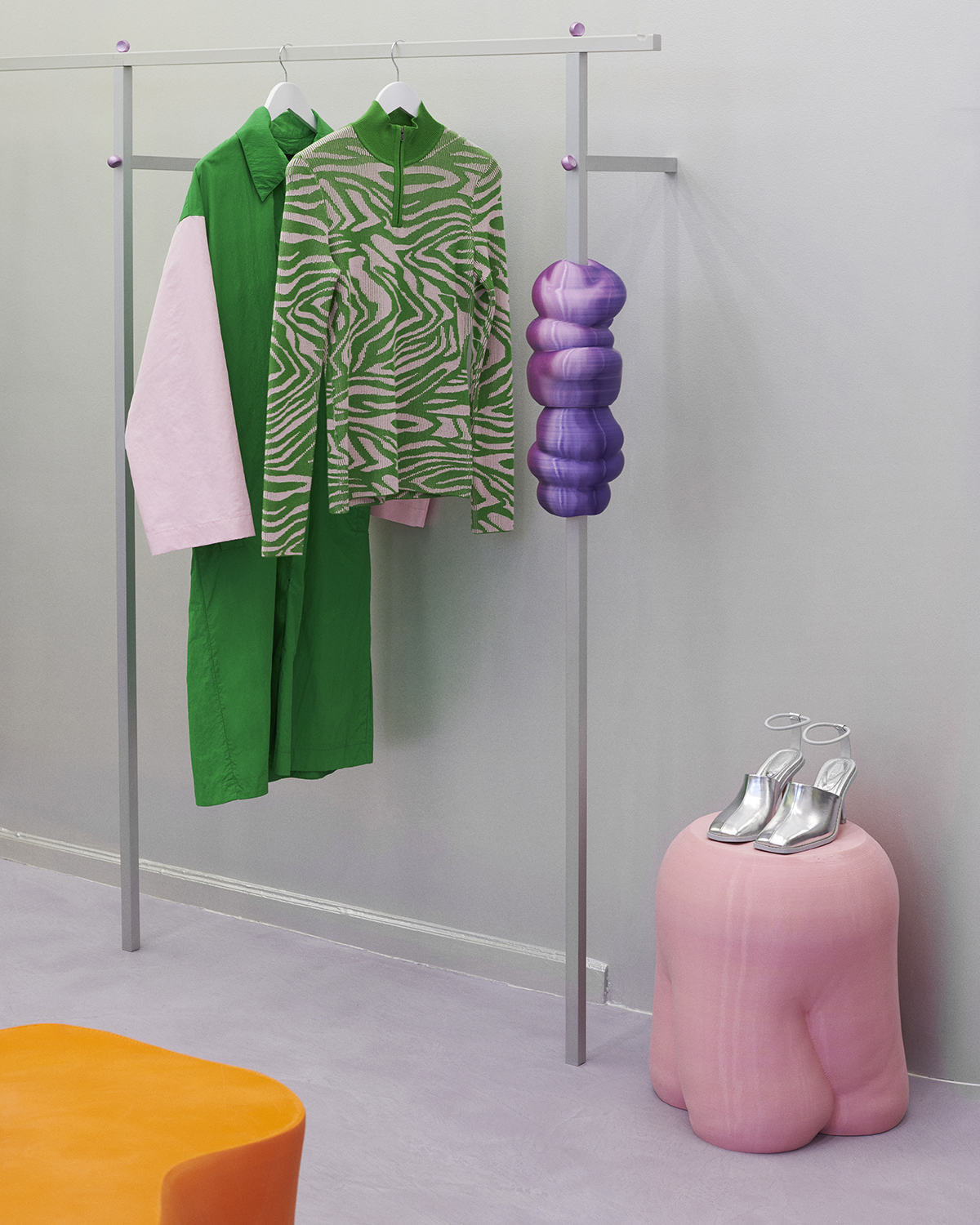
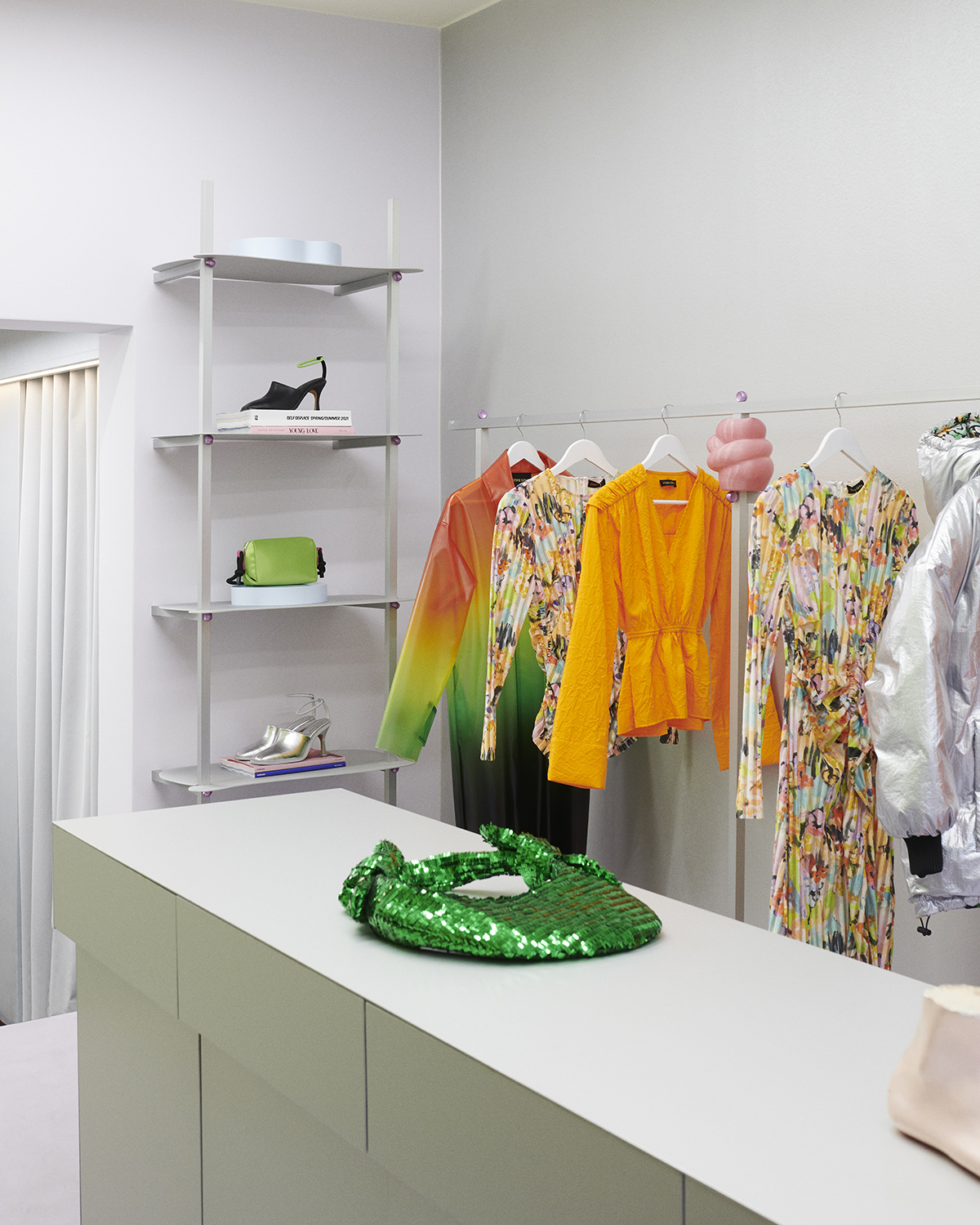
It’s a clever approach to retail interiors, despite being Wang & Söderström’s very first, the pair having spent most of their career thus far creating digital campaigns and objects for clients like Nike and Hay. Stine Goya, who founded her eponymous label in 2006, approached the designers for the role regardless, because she appreciated “our way of working with colors, and our shape language,” they note. Goya also envisioned the collaboration as the perfect culmination of her brand’s recent creative reboot: A central player in the explosive rise of Denmark’s boutique fashion scene, alongside brands like Ganni and Baum Und Pferdgarten, its clothes have become more directional in recent seasons, as has its visual identity, which was reworked earlier this year with the Spanish studio Naranjo Etxeberria. Wang & Söderström were brought on to collaborate with the brand and help translate that new energy into its physical spaces.
In the two Danish stores the duo has executed so far, the walls are painted in soft shades of lime green, sage green, and grey, with plush grey carpeting. There are modular, monochromatic podiums and pedestals made from Kvadrat’s Really Solid Textile Board, and a couple of lumpy 3D-printed stools in saturated pinks and oranges borrowed from Stine Goya’s signature palette. And finally, the aluminum racks with their candy colored “rack jewelry,” which echo forms found in Wang & Söderström’s past work and which gave them an opportunity to further their ongoing experimentation with digital fabrication technologies — as well as test some theories about “producing on-demand without over-producing. Even if the other interior elements are standardized,” they explain, “digital machinery makes it easier to create site-specific and custom solutions.” And, for the Stine Goya stores, add a major dose of fun. ◆
PHOTOS BY MICHAEL RYGAARD
